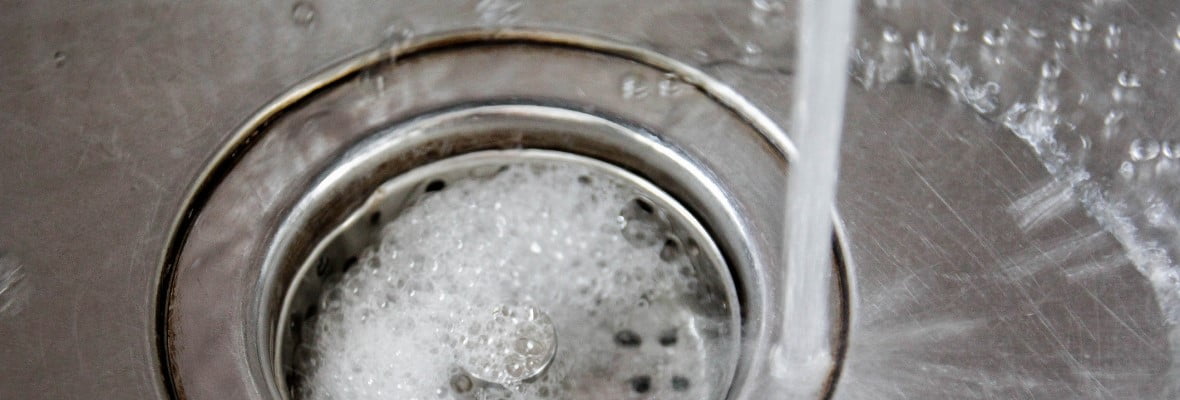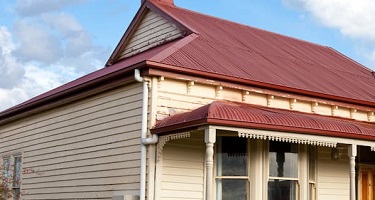Find out how well the 960 Australians 18+ we surveyed understand Escape of Liquid, and what an insurer might consider an Escape of Liquid event.
Quick Stats
58% of Australian respondents couldn’t pick the industry “Escape of Liquid” relates to
12% of participants couldn’t identify what would be a sign of possible Escape of Liquid in the home
Almost 20% of renters in our study who have made a claim on their Home and/or Contents Insurance did so because of Escape of Liquid
Over 50% of renters in our study feel the responsibility is on owners to check flexi-hoses on their regular inspection.
“Escape of Liquid” (EOL) is a little-known concept to most Australians. Yet data from the Australia Federation of Travel Agents (AFTA) show that in 2018, the average cost of a water damage claim (excluding natural disaster events) was over AU$30,000. And as our survey data will show, over 12% of our survey participants who had made an insurance claim did so because of escaped liquid.
Knowing that this can be a common and serious situation for homeowners and renters alike, we conducted a survey of 960 Australians 18+ through Pure Profile (omitting respondents who work in insurance services) to see just how much the average Aussie knows about EOL, and how prepared they might be against EOL damage.
1.0 What is Escape of Liquid
‘Escape of Liquid’ is tricky, because some insurers have different definitions, and different titles. A report from the Financial Rights Legal Centre in 2019 found that most often, insurers would refer to damage caused by “water or other liquid” at the insured address. However, there are certain insurers who only list “water”, not mentioning other liquid[2].
Budget Direct’s Product Disclosure Statement (PDS) refers to Escape of Liquid as:
Loss or damage at the insured address caused by the sudden escape of liquid. You are also covered for damage from liquid that has escaped slowly over time that you couldn’t be reasonably aware of.
This includes water from pipes or plumbing, but also any non-water liquids that suddenly escape in your home. For example, if an old oil heater were to leak into your floorboards or carpet, that would still be described as an Escape of Liquid.
2.0 The Benefits of Understanding Escape of Liquid
Tailored Insurance
Depending on what risks you face, knowing what’s covered by your insurer as “Escape of Liquid” is important. EOL should not be confused with flood cover, which for some insurers is an optional cover which you may consider adding to your policy.
The Right Precautions
By knowing where liquid can escape in your home (such as from old oil heaters, flexi-hoses, and other liquid-filled items around the home), you can proactively take measures to decrease their risk of leaking.
Smooth Claims
If you know in advance what your insurer would call “Escape of Liquid”, or what’s storm damage, you can often make a claim with more confidence that you won’t receive a nasty surprise when your claim is reviewed.
For most insurance customers, having an understanding of this field can help immensely, from buying insurance to making claims.
3.0 Escape of Liquid Survey Results
3.1 58% of participants don’t know what “Escape of Liquid” means
What is the industry definition of "Escape of Liquid"?
| A | When liquid escapes in the home and causes damage. |
|---|---|
| B | When a car has a very slow fuel leak, resulting in higher-than-ordinary fuel consumption. |
| C | When a patient in a hospital unintentionally passes urine/other fluids during surgery. |
| D | When an airplane frosts on the outside of the fuselage due to a small leak. |
We took a general summation of “Escape of Liquid” as defined by a variety of insurers based on The Financial Rights Legal Centre’s findings, to find out whether Australians were familiar with it as a term for home insurance.
The findings were that Australian respondents were able to associate it more closely with damage in the home than our other 3 fictitious descriptions, however 58% of those surveyed still weren’t able to correctly identify what “Escape of Liquid” might relate to in respect of home and contents insurance, being ‘When liquid escapes in the home and causes damage.’
3.2 Over 26% of Australian participants have no Home or Contents Insurance
Do you have insurance on the home you live in?
Over 60% of renters in our study do not have any form of home or contents insurance, compared to less than 6% of homeowners. The type of home factored significantly into someone’s likelihood to have insurance, with those in houses by far the most likely to have Home & Contents Insurance.
Interestingly, over 30% of respondents who live in a townhouse suggested they have Home & Contents Insurance. In a lot of cases, this is impossible, as Home & Contents Insurance won’t be available on these properties (they would typically be insured by Strata Insurance). This could simply mean that our respondents were unsure of how to classify their own insurance.
3.3 Over 40% of participants with Home & Contents Insurance have made a claim
Have you ever made a claim on your home and/or contents insurance?*
*Only participants with a current insurance policy were asked this question.
Across Australia, we found that over 36% of our respondents have made a claim on their home and/or contents insurance before. However, this rose to over 40% of participants with home & contents insurance.
It seems those with home insurance, or contents insurance as standalone policies have the lowest rate of claims, with 22% and 26% rates respectively. However this could also correlate to having less covered events and situations, therefore less reasons to make a claim.
3.4 26% of participants who claimed on Home and Contents Insurance don’t know if their claim concerned ‘Escape of Liquid’
Have you ever made a claim relating to Escape of Liquid?**
| A | No, I've never claimed for Escape of Liquid |
|---|---|
| B | I don't think I've made a claim relating to Escape of Liquid |
| C | I honestly don't know |
| D | I think I might have claimed for Escape of Liquid |
| E | Yes, I've made an Escape of Liquid claim |
**Only participants who had previously made a claim were asked this question.
Taking results only from participants who had confirmed they’d previously made a claim on their home and/or contents insurance, we find there’s still some uncertainty as to whether EOL was involved. 73% of participants could confirm or deny whether EOL was definitively involved (with 12.4% confirming it was), but a staggering 27% weren’t completely sure what their own claim was related to. This further shows there needs to be more understanding around EOL across Australia.
3.5 Only 36% of participants correctly identified all possible signs of escaped liquid
Which of these situations might indicate to you that there has been an escape of liquid (that may cause damage) in a home?***
| A | Rotting skirting boards or floorboards |
|---|---|
| B | Paint appearing to bubble on the inside walls |
| C | Brown spots appearing on the downstairs ceiling of a 2-storey home |
| D | Mouldy shower/bath seals and bases |
| E | Colour changes in carpet |
| F | None of the above |
***Participants were allowed to select multiple options (except for “None of the above”, which was mutually exclusive). This means results may not add to 100%. “EOL Claimers” refers to the people who confidently knew they’d made an Escape of Liquid claim before, based on results in Q3.4.
Each of the above scenarios could present as a possible sign of EOL (except None of the Above). Rotting skirting boards, paint bubbling, brown spots, and all the others might indicate that plumbing has a slow leak, constituting escaped liquid.
However, only 36% of survey participants were able to identify all results. Colour changes in carpet was left out by 50% of respondents, however this can sometimes be a sign that water has escaped from under the floor, or perhaps the roof above. While it doesn’t guarantee there’s been an escape of liquid, it could possibly indicate one.
Taking results only from those who’d confirmed they’d made an EOL claim previously, and we see even less clarity. Generally, their familiarity with the warning signs of EOL are lower than the consensus from participants. In fact, 16% of those who have made an EOL claim in our study believed that none of these indicate escaped liquid.
3.6 Only 1.4% of participants could accurately identify which circumstances would count as ‘Escape of Liquid’
Which of these do you feel an insurance company would consider "escape of liquid"?
Scenario |
% of Participants Who Agreed |
Budget Direct’s Interpretation |
|---|---|---|
A sink pipe bursting, leaking water throughout the kitchen |
75.4% |
This is EOL |
A gap in a roof tile letting rain in, causing damage to a home's ceilings |
52.8% |
This is not EOL This is usually classed by insurers as “storm and rainwater”, which are already covered by Budget Direct. |
A waterbed bursting in a home, leaking and causing damage |
42.7% |
This is EOL |
A neighbour's hose leaking, causing water damage in a home |
36.4% |
This is not EOL A victim of damage here could potentially sue their neighbour for the damage caused, under their liability policy (if they have insurance). |
A neighbour's retaining wall causing water damage in a home |
35.8% |
This is not EOL A victim of damage here could potentially sue their neighbour for the damage caused, under their liability policy (if they have insurance). |
An old oil heater leaking oil onto carpet, causing damage |
29.9% |
This is EOL |
An action of the sea (such as a tidal wave) |
12.9% |
This is not EOL A Tsunami is covered by Budget Direct, however all other Actions of the Sea (such as tidal waves and surges) are general exclusions of the policy. |
None of the above |
7.9% |
- |
3.7 Most participants feel property owners are liable to inspect for possible EOL threats
Whose job should it be to inspect flexi-hoses in rental homes for damage?
One common cause of escaped liquid is the deterioration/fracture of a flexi-hose, usually found under a sink or behind a washing machine. A good habit to be in to avoid damage to your home or belongings is to check the condition of these hoses, and identify early if there is any leakage.
However, Australian respondents seem to disagree on whose responsibility it should be to check their condition. 57% of renters feel it should be the owner’s sole responsibility, with roughly 3% saying it should be the tenants’ responsibility. However, less than 50% of owners agree that it should be their duty, with nearly 8% suggesting it’s the tenants’ liability.
The specific laws around these responsibilities indicate it is more the tenant’s responsibility than the landlord. In Queensland, the Residential Tenancies Authority (RTA) suggests that owners are responsible for keeping the property in a good state of repair, whereas tenants are required to inform landlords of any required works. This would mean tenants should keep an eye on potential EOL signs, and alert their landlord. Generally, landlords are liable to perform any repairs as soon as possible.
4.0 Key Findings
Respondents with Home & Contents Insurance have higher claim rates
54% of Australian respondents have Home & Contents Insurance, and 41% of those people have made a claim on their insurance. It shows that the added coverage of insuring both home and contents can create more instances where their insurance can step in.
Respondents had little to no idea what “Escape of Liquid” meant
58% of respondents couldn’t identify the typical industry definition of “Escape of Liquid”. Beyond understanding that EOL relates to insurance, only 36% could identify all the signs of potential EOL, and less than 2% could identify which events would be classed as EOL by an insurance company.
Even some of those who had claimed were in the dark on EOL. 27% of respondents who had made a claim couldn’t definitely say whether or not their claim had to do with an escape of liquid.
Australians unfamiliar with insurance terms may struggle when it comes time to claim
When asked what type of insurance they held, 30% of participants living in townhouses said they have Home & Contents Insurance. Given this isn’t possible within the insurance industry, it speaks to our participants being unsure of how to classify their own insurance coverage, and a lack of understanding around insurance terms.
This was mirrored by the confusion around Escape of Liquid. By not understanding what your insurer covers under Escape of Liquid, you may be at risk of a nasty surprise when a claim for EOL is assessed. After all, 13% of participants felt an action of the sea would be classed as Escape of Liquid, however this is a general exclusion in Budget Direct Home & Contents Insurance.
The smartest step you can take is to really read the Product Disclosure Statement (PDS), and understand just what your specific insurer classes as EOL. That way, should the day come that you need to claim, you’ll likely know in advance whether your claim is for an insured event.
For Budget Direct customers, you can view your PDS for Home & Contents Insurance online.






